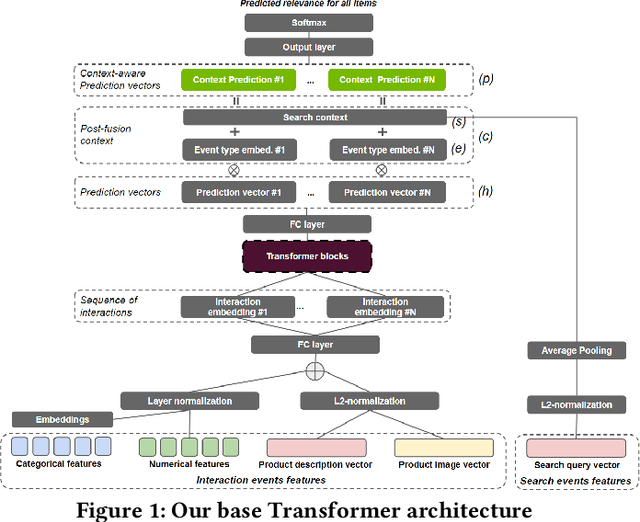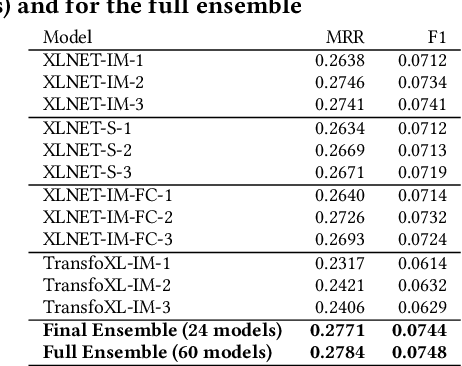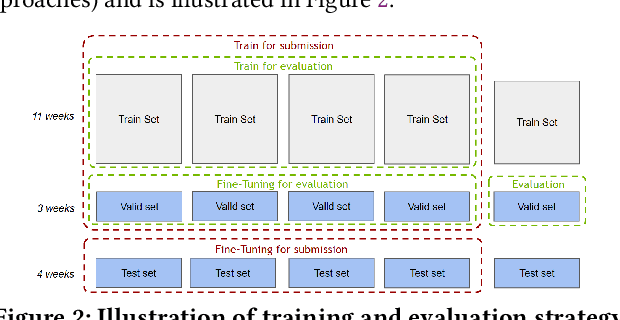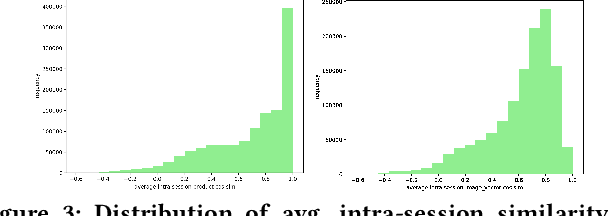Ronay Ak
Enhancing Q&A Text Retrieval with Ranking Models: Benchmarking, fine-tuning and deploying Rerankers for RAG
Sep 12, 2024Abstract:Ranking models play a crucial role in enhancing overall accuracy of text retrieval systems. These multi-stage systems typically utilize either dense embedding models or sparse lexical indices to retrieve relevant passages based on a given query, followed by ranking models that refine the ordering of the candidate passages by its relevance to the query. This paper benchmarks various publicly available ranking models and examines their impact on ranking accuracy. We focus on text retrieval for question-answering tasks, a common use case for Retrieval-Augmented Generation systems. Our evaluation benchmarks include models some of which are commercially viable for industrial applications. We introduce a state-of-the-art ranking model, NV-RerankQA-Mistral-4B-v3, which achieves a significant accuracy increase of ~14% compared to pipelines with other rerankers. We also provide an ablation study comparing the fine-tuning of ranking models with different sizes, losses and self-attention mechanisms. Finally, we discuss challenges of text retrieval pipelines with ranking models in real-world industry applications, in particular the trade-offs among model size, ranking accuracy and system requirements like indexing and serving latency / throughput.
NV-Retriever: Improving text embedding models with effective hard-negative mining
Jul 22, 2024Abstract:Text embedding models have been popular for information retrieval applications such as semantic search and Question-Answering systems based on Retrieval-Augmented Generation (RAG). Those models are typically Transformer models that are fine-tuned with contrastive learning objectives. Many papers introduced new embedding model architectures and training approaches, however, one of the key ingredients, the process of mining negative passages, remains poorly explored or described. One of the challenging aspects of fine-tuning embedding models is the selection of high quality hard-negative passages for contrastive learning. In this paper we propose a family of positive-aware mining methods that leverage the positive relevance score for more effective false negatives removal. We also provide a comprehensive ablation study on hard-negative mining methods over their configurations, exploring different teacher and base models. We demonstrate the efficacy of our proposed methods by introducing the NV-Retriever-v1 model, which scores 60.9 on MTEB Retrieval (BEIR) benchmark and 0.65 points higher than previous methods. The model placed 1st when it was published to MTEB Retrieval on July 07, 2024.
Transformers with multi-modal features and post-fusion context for e-commerce session-based recommendation
Jul 11, 2021



Abstract:Session-based recommendation is an important task for e-commerce services, where a large number of users browse anonymously or may have very distinct interests for different sessions. In this paper we present one of the winning solutions for the Recommendation task of the SIGIR 2021 Workshop on E-commerce Data Challenge. Our solution was inspired by NLP techniques and consists of an ensemble of two Transformer architectures - Transformer-XL and XLNet - trained with autoregressive and autoencoding approaches. To leverage most of the rich dataset made available for the competition, we describe how we prepared multi-model features by combining tabular events with textual and image vectors. We also present a model prediction analysis to better understand the effectiveness of our architectures for the session-based recommendation.
Detection and Segmentation of Manufacturing Defects with Convolutional Neural Networks and Transfer Learning
Sep 03, 2018



Abstract:Quality control is a fundamental component of many manufacturing processes, especially those involving casting or welding. However, manual quality control procedures are often time-consuming and error-prone. In order to meet the growing demand for high-quality products, the use of intelligent visual inspection systems is becoming essential in production lines. Recently, Convolutional Neural Networks (CNNs) have shown outstanding performance in both image classification and localization tasks. In this article, a system is proposed for the identification of casting defects in X-ray images, based on the Mask Region-based CNN architecture. The proposed defect detection system simultaneously performs defect detection and segmentation on input images, making it suitable for a range of defect detection tasks. It is shown that training the network to simultaneously perform defect detection and defect instance segmentation, results in a higher defect detection accuracy than training on defect detection alone. Transfer learning is leveraged to reduce the training data demands and increase the prediction accuracy of the trained model. More specifically, the model is first trained with two large openly-available image datasets before finetuning on a relatively small metal casting X-ray dataset. The accuracy of the trained model exceeds state-of-the art performance on the GRIMA database of X-ray images (GDXray) Castings dataset and is fast enough to be used in a production setting. The system also performs well on the GDXray Welds dataset. A number of in-depth studies are conducted to explore how transfer learning, multi-task learning, and multi-class learning influence the performance of the trained system.
 Add to Chrome
Add to Chrome Add to Firefox
Add to Firefox Add to Edge
Add to Edge